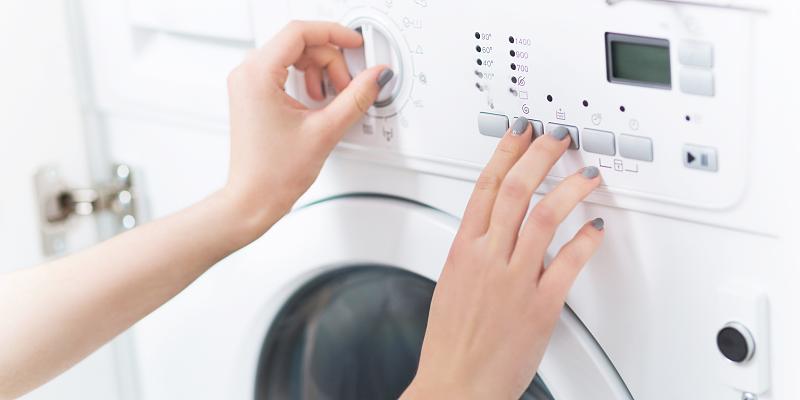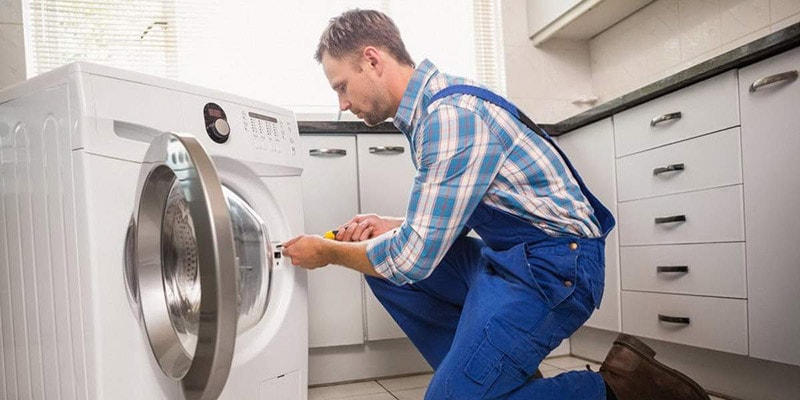Imagine: you have collected dirty things around the house, sorted them by color, put them in the washing machine tank, pressed the 'start' button, but nothing happens. Time drags on, the car does not show any signs of life, and, finally, the error code '4e' is displayed on the screen. If you have never encountered such an error, he will not tell you anything. Meanwhile, from the point of view of the washing machine processor itself, the user received enough information.
Causes of the error and how to fix it yourself

The main reason for the 4e error is the lack of water supply to the tank. It lights up if water does not come out for 2 minutes, or if water is collected so slowly that the required amount has not accumulated in 10 minutes.
New washing machines equipped with a display will report this with a digital error code 4e. Older models turn on the temperature readings on a constant basis plus the rinse and spin indicators flash.
An error code can appear both at the start of the washing machine, and at the beginning of the rinsing procedure.
Processor problems
If error code 4e appeared for the first time, then you need to start not with checking the equipment, but with a banal reboot. For this:
-
Disconnect the washing machine from the power supply by pulling out the plug.
-
Wait 15 minutes.
-
Switch back on.
There is a small chance that the program will start, and that what happened was just a glitch in the complex internals of the control system.
Lack of water
If the reset doesn't work, then the first step to take is to go to the bathtub and turn on the tap. Water, neither cold nor hot, has not flowed or the pressure is so weak that the trickle is very thin? This means that the washing machine is simply not getting enough water from the mains.
The only available solution is to wait until water is supplied, and then start the procedure.
Hose problems
There is water in the tap, the pressure is good, no problems with this part? So it's time for the second step: checking the hose through which the water enters the washing machine. The algorithm is simple:
Check to see if the hose has come off where it is attached to the pipe. Are there any cracks, is there water leaking? If it's gone, you need to try to screw it again, but more tightly.
Check if it has moved away where it is attached to the body of the machine. Are there any cracks? Is the valve damaged? Does something rest against him? If the defect is obvious, it must be repaired.
Check the overall length for damage. There is usually an indicator next to the mount. If it glows red, it means there is a leak. But there is always a chance that it did not work, and it is better to play it safe by examining the hose for minor mechanical damage.
If there are holes, they can be wrapped with special plumbing tape, which is sold in hardware stores and blocks any leaks well. If they are too large (or there is a hose coming off the valves), all that remains is to replace it.
If visual inspection did not give anything, you will have to make a little more effort:
-
Disconnect the washing machine.
-
Using pliers, disconnect the hose from the machine and from the water supply.
-
Pour water into the hose and see if it goes through.
If it passes, then the reason for the appearance of error code 4e is not in it. If it pours from previously unnoticed holes, they need to be sealed. If it does not work in principle, the hose must be cleaned with a strong pressure of water, and if this does not help, replace it with a new one.
After the problem has been resolved, the washing machine should work quietly.
Filter problems
There is water, the hose is intact and firmly attached to the water supply and to the washing machine, and the error code 4e still lights up on the screen? So the third step is to check how things are with the filter. It is designed to trap solid particles that may get caught in the water: pieces of rust, chipped off in the layering pipes, such small but unpleasant things.
The algorithm of actions is as follows:
-
Disconnect the washing machine. To do this, it is enough to pull the plug out of the socket, but without this no repair measures can be taken.
-
Unscrew the water supply hose. It is in the place where it comes into contact with the body of the washing machine that the filter is installed. The procedure will most likely require pliers or an adjustable wrench.
-
Remove the filter. It looks like a thin metal mesh. It is not easy to pick it up with your bare hand, therefore, again, it is worth using pliers.
-
Verify. A superficial examination is often sufficient. It is enough to shake off pieces of rust, but you will have to tinker with adhering deposits.
-
Perform mechanical cleaning. To do this, hold the filter under a dense stream of cold water, and then clean off everything that remains on it with a thick needle.
-
Carry out chemical cleaning. If the layers still remain, you need to add a tablespoon of citric acid to a glass of water, mix and lower the filter there. Hold for half an hour or an hour, depending on the degree of soiling, remove.
-
After that, the filter is put in place, the hose is screwed back, the plug is plugged back into the outlet and the start is repeated. The procedure is likely to help get rid of error code 4e.
Valve or drain problems
There is water, the hose is intact, the filter is clean, but the washing machine still does not start, showing error code 4e?
The fourth step is to assess if everything is in order with the valve. For this:
-
De-energize the machine.
-
Expand with the side to which the main wire goes.
-
Remove the hose through which the water flows, remove the filter and carefully remove the valve. It regulates the injection of water into the tank and looks like several plastic pipes connected together.
-
If there is no visible damage, you need to connect the inlet hose to the tap, put the valve on the other side and turn on the water. If it leaks, then it is defective and needs to be replaced.
In theory, you can check how specific sections of the valve work, but for this you need to be able to apply electric current to specific wires. Most people who are not fond of electronics do not have this opportunity.
The fifth step should only be taken if the washing machine draws water and immediately drains it, showing error code 4e. This is an indicator of problems with the drain hose. Check it in the same way as the filler:
-
Visually assess whether there are holes, whether it is moving away from the valve.
-
Check valve. Leaks water – it means that it is broken, the reason for the error code 4e is in it.
-
Check if the hose is properly connected to the drain. To do this, compare reality with instructions.
All checks will take about half an hour, but the result may be a solved problem. It will be especially pleasant if she decides to replace the hose, without calling the master, on her own.
When specialist intervention is necessary

But no matter how nice it is to deal with the difficulties at home, sometimes you cannot do without the help of professionals:
-
If the inlet or drain valve is out of order. That is, if, in the absence of reasons visible to the layman, the washing machine does not collect or drain water. The master will come, take out the valve, apply voltage, thus identify the malfunction and replace the defective part. Repair is not difficult, but for it you need to have specific equipment, which is not in most houses.
-
If the command apparatus is out of order. In this case, the layman will not cope in principle – work is needed at the program level, perhaps the replacement of parts, and only an experienced person will figure it out.
-
If the relay is out of order, it is responsible for assessing the amount of water collected. Without it, the washing machine 'does not know' whether there is enough water or not, and therefore does not draw at all. It is simply not possible for a layman to pull out a relay without knowing where it is, and without special tools. And only those who have been doing this for a long time can determine what the problem is – in mechanical damage, in a blockage, in the fact that literally a couple of contacts have left.
-
If the control panel is out of order. In this case, the washing machine does not respond to any commands at all, and, of course, does not draw water. An amateur can also remove the panel, but in order to put it in order, you need skills and equipment that an ordinary person who is not fond of electronics does not have.
It is worth calling the master if all the resuscitation actions did not give the desired effect.
Conclusion
A compressed instruction for working with error code 4e from Samsung will sound like this:
-
Restart the washing machine.
-
Check if there is any water at all and if the pressure is sufficient.
-
Disconnect the inlet and outlet hoses and check for mechanical damage and if water passes through them.
-
Disconnect the filter, clean it by hand, and then soak it for half an hour in a citric acid solution.
-
Assess the condition of the valve and the correct connection of the drain to the sewer.
If something helps – great, you can easily wash it.
If all else fails, it remains only to call the master and entrust the repair to him.









